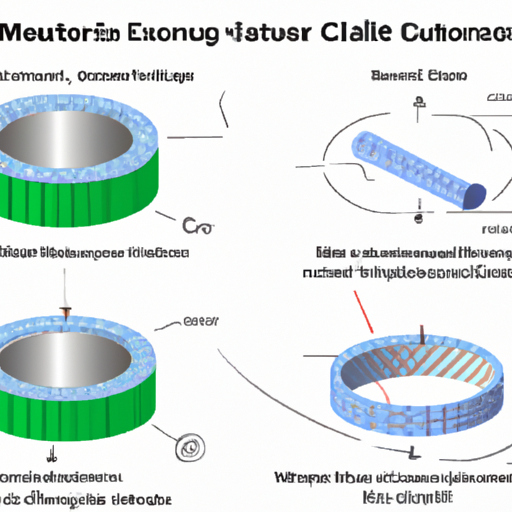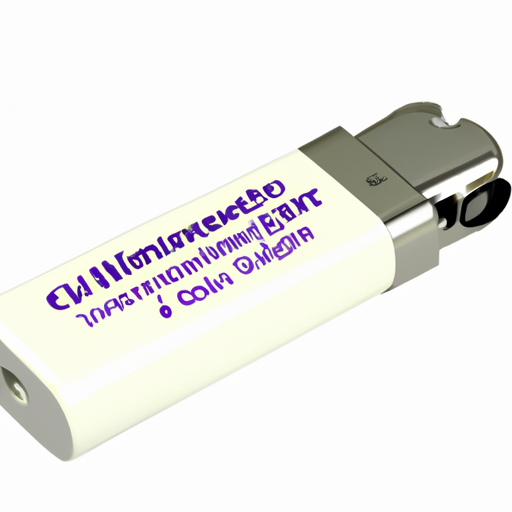What are the Manufacturing Processes of the Latest Cylindrical Cell Structure Diagram?
I. Introduction
Cylindrical cells have become a cornerstone in the realm of energy storage, powering everything from electric vehicles to portable electronics. As the demand for efficient and reliable energy solutions continues to rise, understanding the manufacturing processes behind these cells is crucial. This article aims to delve into the intricate manufacturing processes of the latest cylindrical cell structures, shedding light on the components, techniques, and innovations that define this technology.
II. Background on Cylindrical Cells
A. Definition and Characteristics of Cylindrical Cells
Cylindrical cells are a type of electrochemical cell characterized by their cylindrical shape. They typically consist of a metal canister that houses the anode, cathode, electrolyte, and separator. This design allows for efficient packing of materials, leading to high energy density and performance. Common sizes include 18650 and 21700, which refer to the dimensions of the cells.
B. Applications of Cylindrical Cells in Various Industries
Cylindrical cells are widely used in various applications, including consumer electronics, electric vehicles (EVs), and renewable energy storage systems. Their robust design and high energy capacity make them ideal for applications requiring reliable power sources.
C. Evolution of Cylindrical Cell Technology
Over the years, cylindrical cell technology has evolved significantly. Advances in materials science, manufacturing techniques, and battery management systems have led to improved performance, safety, and longevity of these cells. As the industry continues to innovate, the focus is on enhancing energy density, reducing costs, and minimizing environmental impact.
III. Structure of Cylindrical Cells
A. Components of Cylindrical Cells
1. **Anode**: Typically made from graphite or silicon-based materials, the anode is where lithium ions are stored during charging.
2. **Cathode**: The cathode is usually composed of lithium metal oxides, such as lithium cobalt oxide or lithium iron phosphate, which facilitate the release of lithium ions during discharge.
3. **Electrolyte**: The electrolyte, often a lithium salt dissolved in a solvent, allows for the movement of lithium ions between the anode and cathode.
4. **Separator**: This component prevents direct contact between the anode and cathode while allowing lithium ions to pass through.
5. **Canister**: The outer casing that provides structural integrity and protection to the internal components.
B. Latest Advancements in Cylindrical Cell Design
Recent advancements in cylindrical cell design include the use of high-capacity anode materials, improved electrolyte formulations, and innovative separator technologies. These enhancements contribute to higher energy densities and longer cycle lives.
C. Importance of Structure in Performance and Efficiency
The structural integrity of cylindrical cells is paramount for their performance. A well-designed cell can withstand thermal and mechanical stresses, ensuring safety and reliability during operation.
IV. Overview of Manufacturing Processes
A. General Manufacturing Steps for Cylindrical Cells
1. **Material Selection**: Choosing the right materials for the anode, cathode, electrolyte, and separator is critical for performance.
2. **Electrode Preparation**: This involves mixing active materials with binders and conductive additives, followed by coating onto current collectors.
3. **Cell Assembly**: The prepared electrodes, separator, and electrolyte are assembled into the canister.
4. **Formation and Aging**: The cell undergoes initial charging and discharging cycles to stabilize its performance.
5. **Quality Control and Testing**: Rigorous testing ensures that the cells meet safety and performance standards.
V. Detailed Manufacturing Processes
A. Material Selection
The selection of materials is the foundation of cylindrical cell manufacturing. Anodes are often made from graphite due to its excellent conductivity and stability. However, researchers are exploring silicon-based materials for their higher capacity. Cathodes typically consist of lithium metal oxides, with ongoing research into alternative materials that can enhance performance.
B. Electrode Preparation
1. **Mixing and Coating Processes**: Active materials are mixed with binders and conductive additives to form a slurry, which is then coated onto metal foils (current collectors).
2. **Drying and Calendaring**: The coated electrodes are dried to remove solvents and then calendared to achieve the desired thickness and density.
3. **Cutting and Stacking**: The dried electrodes are cut into specific shapes and sizes, ready for assembly.
C. Cell Assembly
1. **Winding vs. Stacking Methods**: Cylindrical cells can be assembled using winding or stacking methods. Winding involves rolling the electrodes and separator into a cylindrical shape, while stacking layers can be used for larger cells.
2. **Integration of Components**: The anode, cathode, separator, and electrolyte are integrated into the canister, ensuring proper alignment and contact.
3. **Sealing and Canister Formation**: The canister is sealed to prevent leakage and contamination, often using laser welding techniques for precision.
D. Formation and Aging
1. **Initial Charging and Discharging Cycles**: The cell undergoes several charge-discharge cycles to form a stable solid electrolyte interphase (SEI) layer on the anode, which is crucial for performance.
2. **Importance of Aging for Performance Stability**: Aging allows the cell to stabilize, ensuring consistent performance over its lifespan.
E. Quality Control and Testing
1. **Electrical Testing Methods**: Cells are subjected to various electrical tests, including capacity, internal resistance, and cycle life assessments.
2. **Safety Assessments**: Safety tests, such as thermal runaway and short-circuit tests, are conducted to ensure the cells can operate safely under various conditions.
3. **Performance Validation**: Final performance validation ensures that the cells meet industry standards and specifications.
VI. Innovations in Manufacturing Techniques
A. Automation and Robotics in Production
The integration of automation and robotics in the manufacturing process has significantly increased efficiency and precision. Automated systems can handle repetitive tasks, reducing human error and improving production rates.
B. Advanced Materials and Their Impact on Efficiency
The development of advanced materials, such as high-capacity anodes and solid-state electrolytes, is revolutionizing cylindrical cell manufacturing. These materials enhance energy density and safety, paving the way for next-generation batteries.
C. Sustainable Manufacturing Practices
As environmental concerns grow, manufacturers are adopting sustainable practices, such as recycling materials and reducing waste. This shift not only benefits the environment but also enhances the overall sustainability of the battery industry.
D. Industry 4.0 and Smart Manufacturing
The advent of Industry 4.0 has introduced smart manufacturing techniques, including IoT integration and data analytics. These technologies enable real-time monitoring and optimization of production processes, leading to improved efficiency and quality.
VII. Challenges in Manufacturing Cylindrical Cells
A. Supply Chain Issues
The global supply chain for battery materials is often disrupted by geopolitical factors, leading to shortages and increased costs. Manufacturers must navigate these challenges to ensure a steady supply of critical materials.
B. Cost Management
As demand for cylindrical cells rises, managing production costs becomes increasingly important. Manufacturers are exploring ways to reduce costs without compromising quality, such as optimizing processes and sourcing materials more efficiently.
C. Environmental Concerns
The environmental impact of battery production, including resource extraction and waste management, poses significant challenges. Manufacturers are under pressure to adopt greener practices and develop more sustainable products.
D. Technological Limitations
Despite advancements, there are still technological limitations in cylindrical cell manufacturing, such as achieving higher energy densities and improving cycle life. Ongoing research and development are essential to overcome these hurdles.
VIII. Future Trends in Cylindrical Cell Manufacturing
A. Predictions for Technological Advancements
The future of cylindrical cell manufacturing is likely to see continued advancements in materials science, leading to higher energy densities and improved safety features. Innovations in solid-state batteries and alternative chemistries may also emerge.
B. Potential Shifts in Market Demand
As electric vehicles and renewable energy storage become more prevalent, the demand for cylindrical cells is expected to grow. Manufacturers will need to adapt to changing market dynamics and consumer preferences.
C. Research and Development Focus Areas
Future research will likely focus on enhancing battery performance, reducing costs, and developing sustainable manufacturing practices. Collaboration between industry and academia will be crucial in driving innovation.
IX. Conclusion
Understanding the manufacturing processes of cylindrical cells is essential for appreciating their role in modern energy storage solutions. As technology continues to evolve, innovation in manufacturing techniques will play a pivotal role in shaping the future of cylindrical cells. By addressing challenges and embracing advancements, the industry can ensure that cylindrical cells remain a reliable and efficient energy source for years to come.
X. References
- Academic journals on battery technology and materials science.
- Industry reports from leading battery manufacturers and research organizations.
- Relevant books and articles discussing the evolution and future of energy storage technologies.
This comprehensive exploration of cylindrical cell manufacturing processes highlights the intricate steps involved in creating these vital energy storage solutions, emphasizing the importance of innovation and sustainability in the industry.













